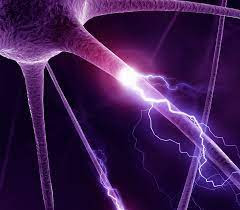Patent No. 6754472 Method and apparatus for transmitting power and data using the human body
Patent No. 6754472
Method and apparatus for transmitting power and data using the human body (Williams, et al., Jun 22, 2004)
Abstract
Methods and apparatus for distributing power and data to devices coupled to the human body are described. The human body is used as a conductive medium, e.g., a bus, over which power and/or data is distributed. Power is distributed by coupling a power source to the human body via a first set of electrodes. One or more devise to be powered, e.g., peripheral devices, are also coupled to the human body via additional sets of electrodes. The devices may be, e.g., a speaker, display, watch, keyboard, etc. A pulsed DC signal or AC signal may be used as the power source. By using multiple power supply signals of differing frequencies, different devices can be selectively powered. Digital data and/or other information signals, e.g., audio signals, can be modulated on the power signal using frequency and/or amplitude modulation techniques.
Notes:
FIELD OF THE INVENTION
The present invention relates to methods and apparatus for transmitting power
and data, and more particularly, to methods of powering devices coupled to the
human body and communication information between the devices.
BACKGROUND OF THE INVENTION
Small portable electronic devices are commonplace today. Small portable devices
commonly used by people today include wristwatches, radios, communications devices,
e.g., pagers and cell phones, and personal data assistants (PDAs) to name but
a few exemplary devices. As electronics manufacturing techniques have improved,
weight and power consumption requirements of many small portable devices have
decreased. At the same time, the capabilities of the devices have increased.
As a result, it is now possible to power many small electronic devices including
watches, audio players, personal data assistants, portable computers, etc. with
relatively little power.
Given the small size and portable nature of many of today's portable electronic
devices, people have begun wearing them on their bodies. For example, wristwatches
are worn on people's arms, pagers and PDAs are worn on people's belts, and small
displays are sometimes worn mounted on headgear.
As a result of carrying multiple portable electronic devices, there is often
a significant amount of redundancy in terms of input/output devices included
in the portable devices used by a single person. For example, a watch, pager,
PDA and radio may all include a speaker. In order to reduce the redundancy in
input/output devices, networking of portable electronic devices has been proposed.
By exchanging data, e.g., as part of a network, a single data input or output
device can be used by multiple portable devices, eliminating the need for each
of the portable devices to have the same input/output device.
Various approaches have been taken in an attempt to network portable devices.
The uses of radio (RF) signals, infrared (IR) communications signals, and near
field intrabody communication signals are examples of various signals that have
been suggested for use in networking portable devices. Radio signals between
devices can cause interference. In addition radio devices can be expensive to
implement and tend to consume relatively large amounts of power. In addition,
decoding another person's transmitted information and controlling another person's
device is plausible using RF, raising the concern for security and privacy.
IR communications signals present similar privacy concerns to those of RF signals
while further being subject to additional limitations in terms of the tendency
for many objects, e.g., opaque objects, to block the transmission of IR signals.
Near field intrabody communication signals represent a relatively new and still
largely undeveloped field of signal communications.
In the case of one near field intrabody communications system, information is
exchanged between electronic devices on or near the human body by capacitively
coupling picoamp currents through the human body of a person.
While some work has been done to minimize the redundancy that exists in data
input/output devices, in portable devices frequently used by a single individual,
there still remains room for improvements in the way information is communicated
between portable devices. In addition, some wearable devices are not big enough
to have any kind of interface at all; e.g. earrings.
There remains significant room for improvement with regard to how portable devices
are powered. Portable electronic devices frequently rely on power supplied by
batteries to operate. Batteries have a limited energy storage capability. As
a result, batteries periodically need to be replaced or, assuming they are rechargeable,
recharged. The need to replace or recharge batteries posses a serious limitation
on known portable battery powered devices. Battery replacement normally involves
physically removing a current set of batteries and replacing them with a new
set of batteries. Recharging of batteries normally involves plugging the portable
device into a battery charger thereby limiting the devices portability until
the re-charging is complete or, alternatively, swapping a charged battery pack
for a battery pack including the batteries, which need to be recharged.
The swapping of battery packs, replacement of batteries, and/or recharging of
batteries by plugging in a portable device represents an inconvenience in terms
of time involved with a user performing a battery replacement operation or recharging
operation. In many cases it also represents an interruption in service, i.e.,
often during the battery swapping or recharging operation, the device cannot
be used or its portability is limited.
Until the present invention, the focus with regard to portable device power
issues has been largely on improving the quality of batteries, reducing the
amount of power required by a portable device to operate, and/or in providing
backup power sources, e.g., to permit the swapping of batteries without causing
an interruption in operation.
While recent improvements in batteries and device power consumption has increased
the amount of time portable devices can operate before needing the batteries
to be recharged or replaced, the need to periodically recharge or replace batteries
in portable devices remains an area where improvements can be made. In particular,
there is a need for making recharging of batteries easier to perform, preferably
without requiring an interruption in device operation or for backup batteries
inside the device. There is also a need for eliminating batteries in at least
some portable devices, thereby reducing the weight of the portable devices making
them easier to wear for extended periods of time.
SUMMARY OF THE PRESENT INVENTION
The present invention is directed to methods and apparatus for distributing
power to devices coupled to the human body. The invention is also directed to
methods and apparatus for communicating information, e.g., data and control
signals, to devices coupled to the human body.
In accordance with the present invention the human body is used as a conductive
medium, e.g., a bus, over which power is distributed. Information, e.g., data
and control signals, may also be distributed over the human body in accordance
with the present invention. To avoid the need for digital circuitry, e.g., in
audio output devices, some of the communicated signals may be analog signals.
For example, analog audio signals may be transmitted to a speaker using the
human body as the communications media by which the audio signal is transmitted.
In accordance with the invention, power is distributed by coupling a power source
to the human body via a first set of electrodes. One or more devices to be powered,
e.g., peripheral devices, are also coupled to the human body via additional
sets of electrodes. The devices may be, e.g., a speaker, display, watch, keyboard,
etc. A pulsed DC signal or AC signal may be used as the power source. By using
multiple power supply signals of differing frequencies, different devices can
be selectively powered. For example, a 100 Hz signal may be used to power a
first device while a 150 Hz signal may be used to power a second device. Digital
data and/or other information signals, e.g., audio signals, can be modulated
on the power signal using frequency and/or amplitude modulation techniques.
The power source and peripheral devices can interact to form a complete computer
network where the body serves as the bus coupling the devices together. Devices
can include optional batteries, one or more CPUs, transmit/receive circuitry,
and/or input/output circuitry. In one particular exemplary network implementation
the first device to be placed on the body operates as a master device, e.g.,
bus master, with subsequently added devices working as slaves. In accordance
with the invention power and/or communication signals may also be transmitted
from one body to another by touch.
The proposed methods of the present invention enable the use of a whole new
class of wearable devices. These devices do not have a direct interface, but
are instead used as relays for collecting and transmitting information to the
user. For example earrings, which can be used to measure the persons pulse rate
or even deliver sound to the ear via a phone worn on the person's belt. To program
the earring directly would be a quite cumbersome task; however, the earrings
parameters could be set via another device that is large enough and has the
appropriate user interface to enter data. The user could use this device to
control the volume of the earrings or to control other function of this device.
This concept could be extended to many other such devices that are worn on the
body: jewelry, watches, and eyeglasses to name a few.
Because the devices of the present invention are networked, they can be recharged
and powered by other devices on the network. Kinetic to power converters can
be used in this network to sustain this network's power. Kinetic converters
in shoes and on wrist watches can be used to convert the kinetic energy of the
user to electrical power and distribute that power to the rest of the network.
This is yet another property that distinguishes devices of the present invention
from other networks such as RF or IR.







Comments